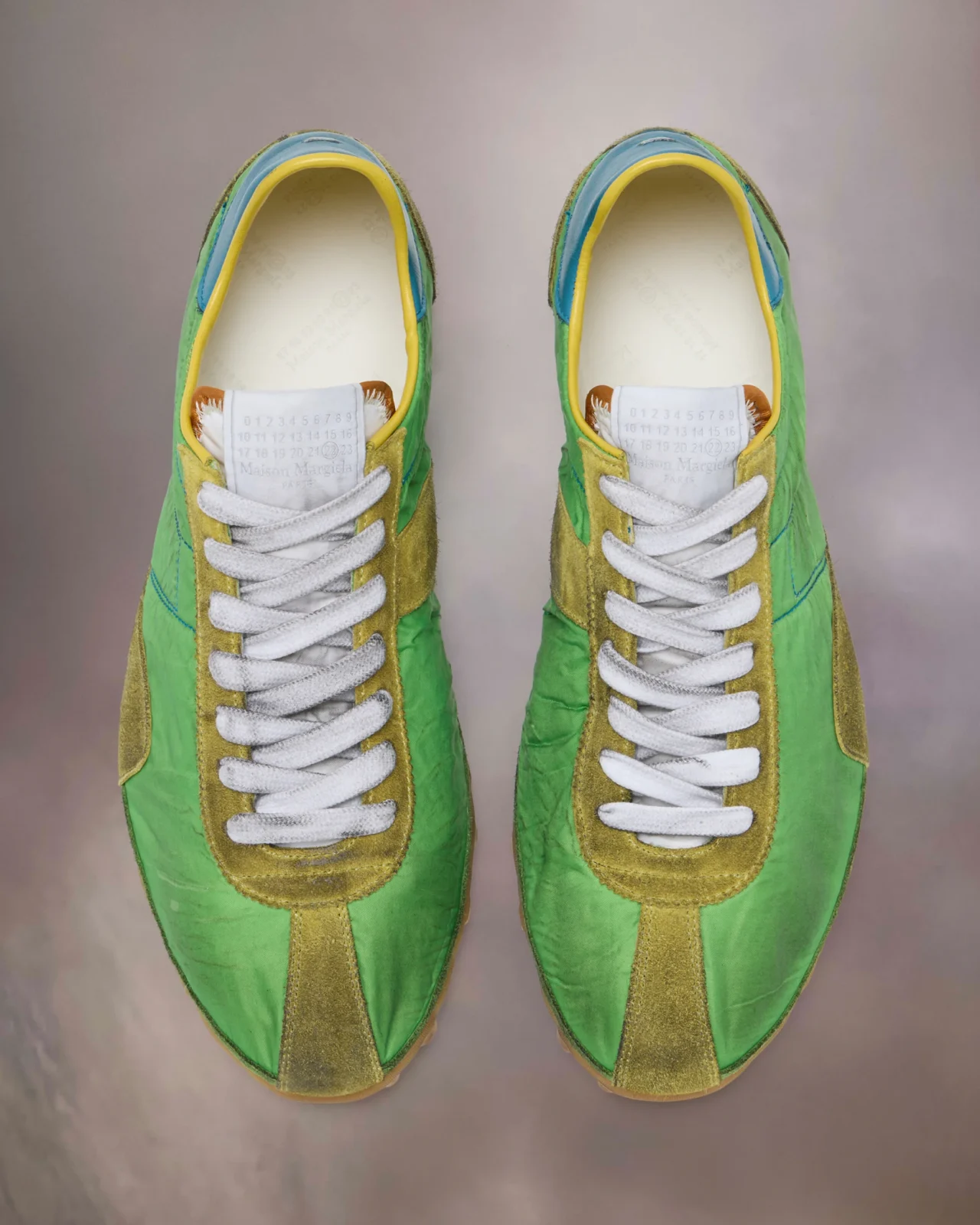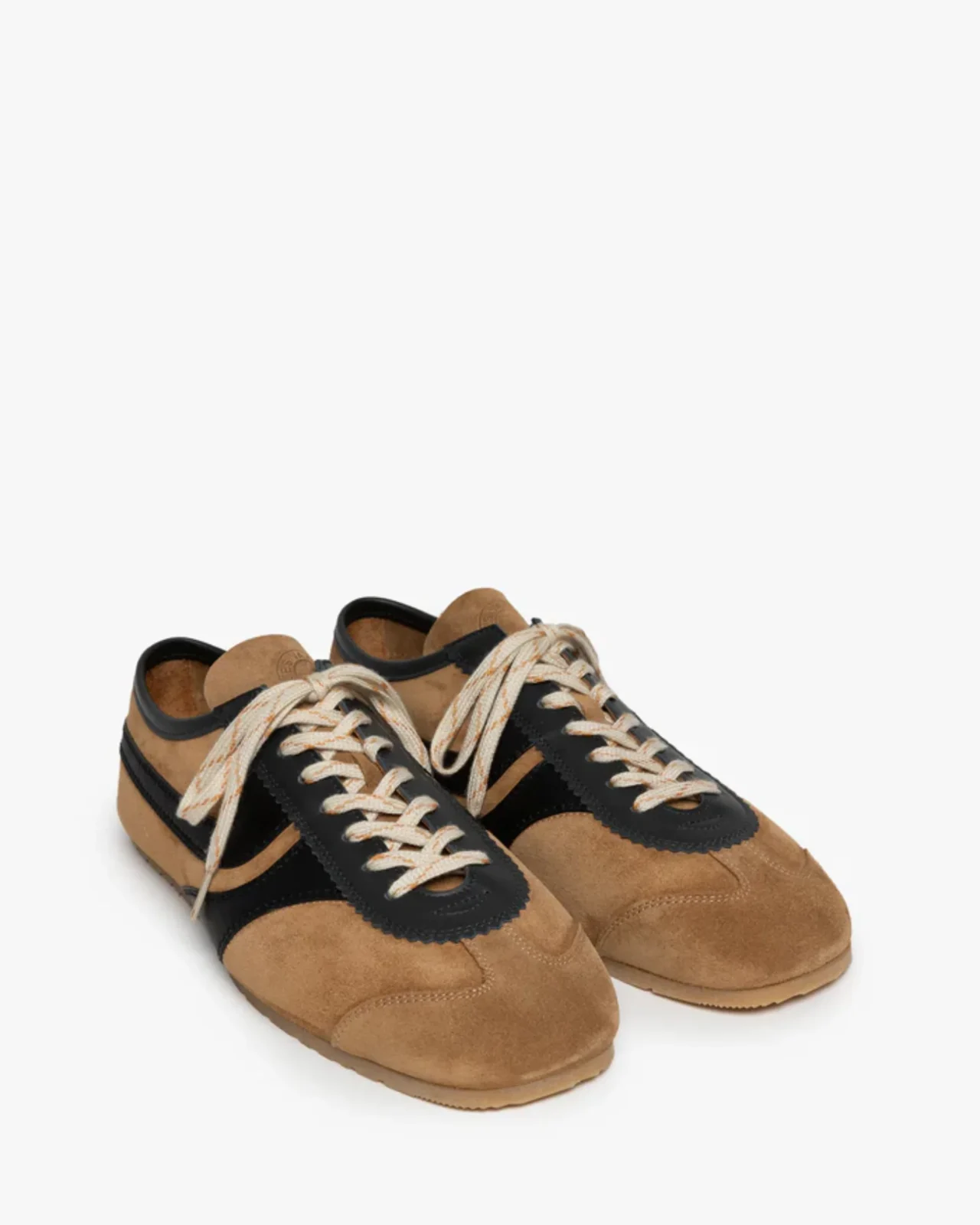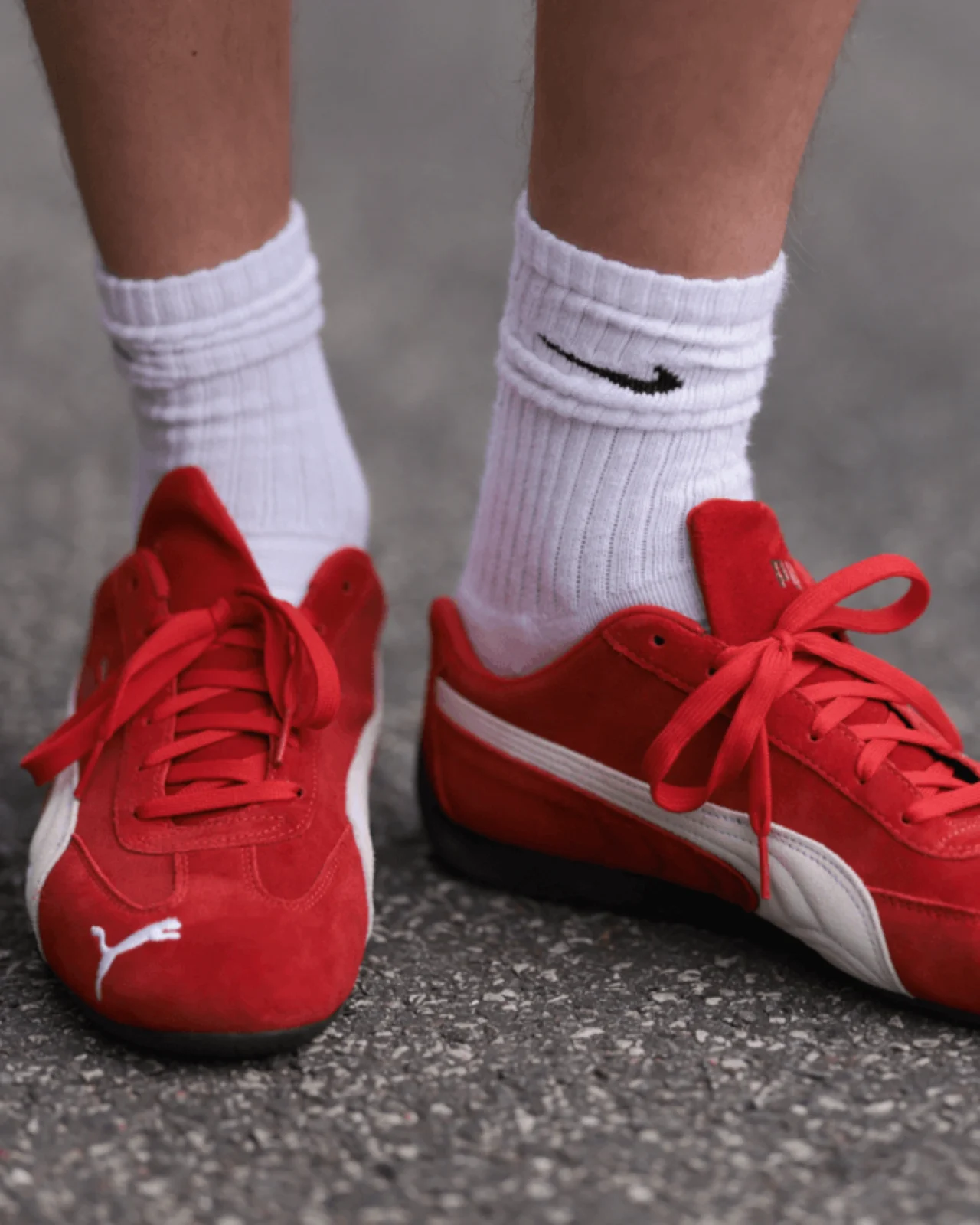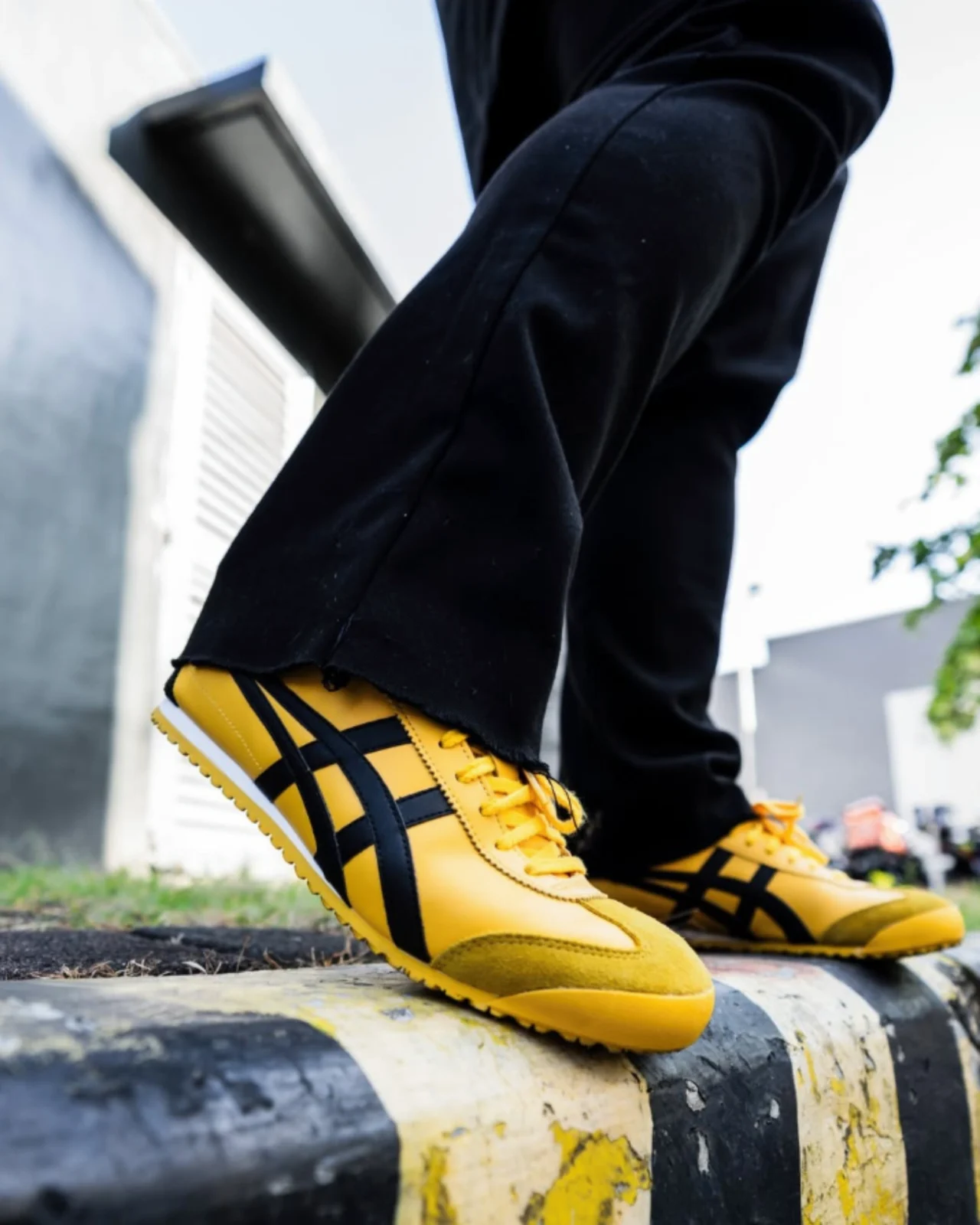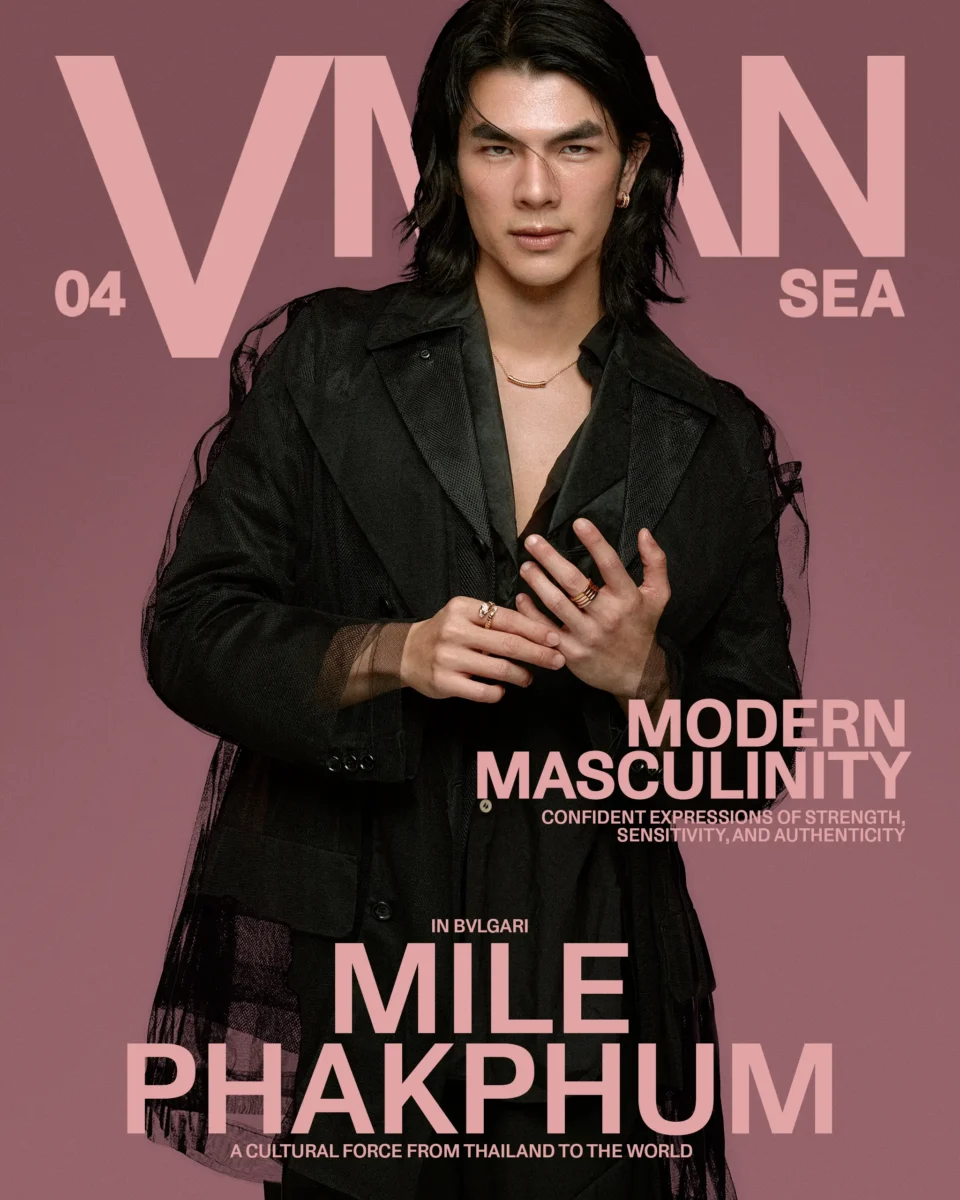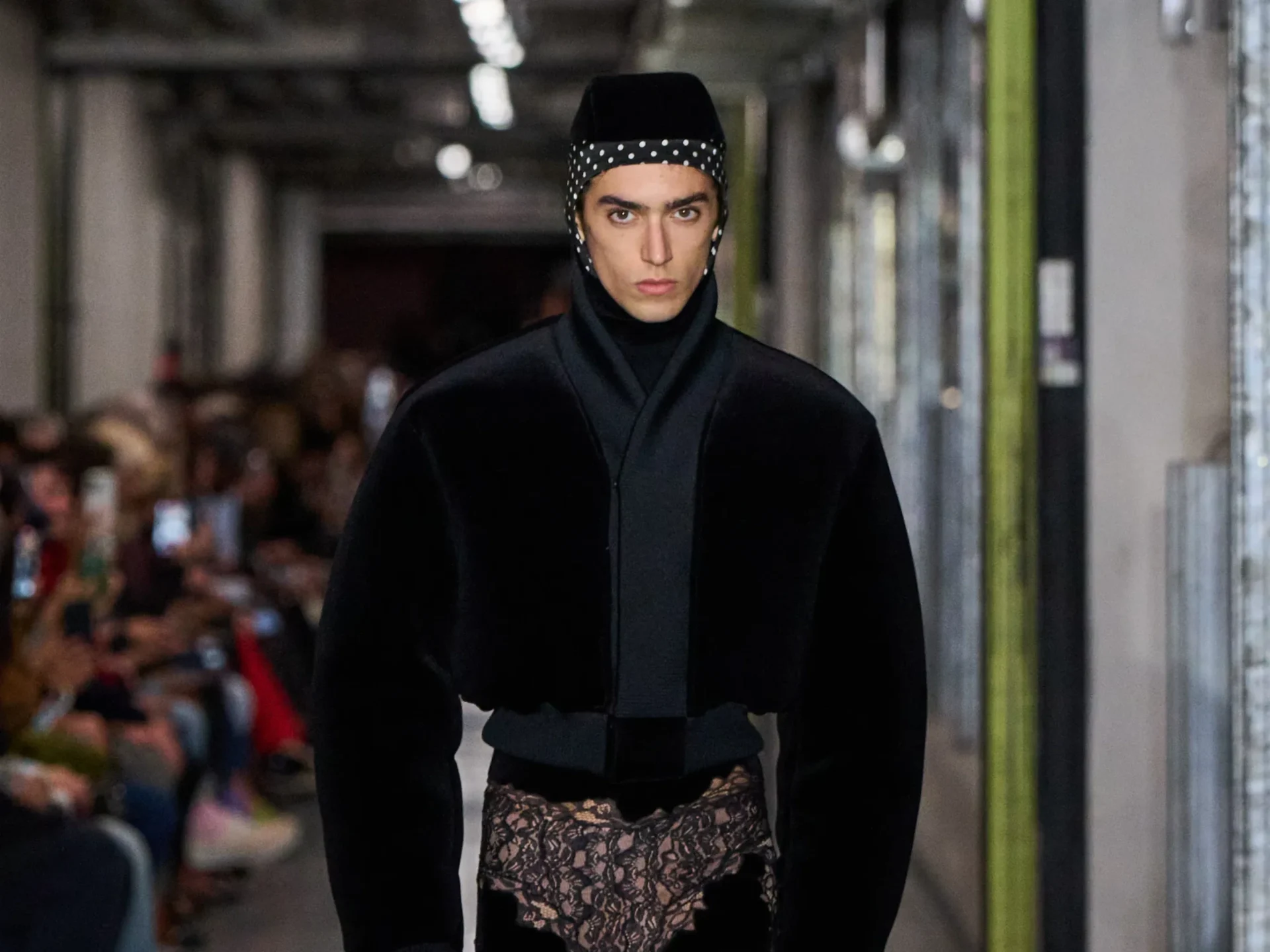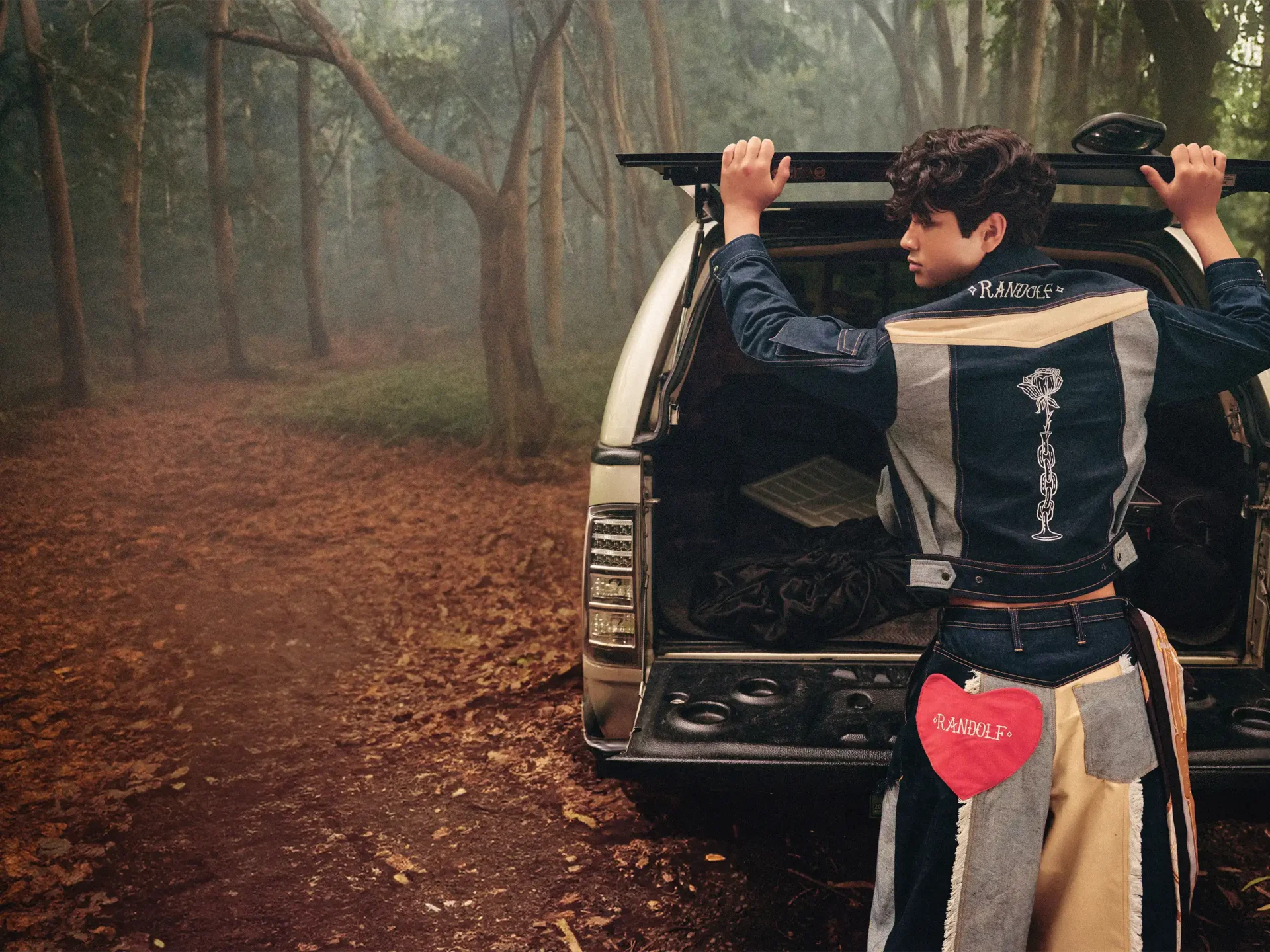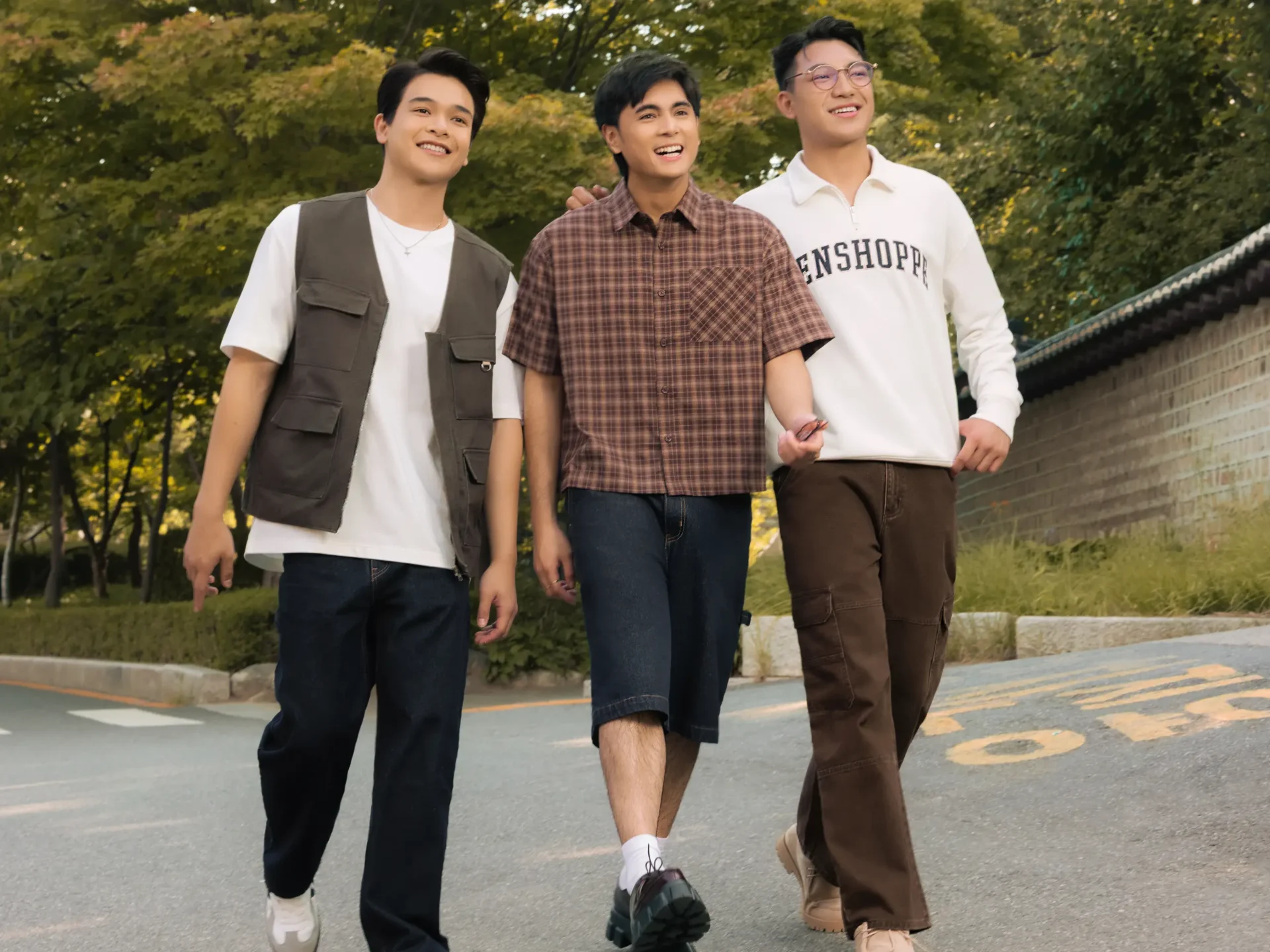Inside the Rise of Torpedo Sneakers, Fashion’s New Slim Status Symbol
Torpedo sneakers are emerging as the latest luxury footwear trend, replacing bulky “dad shoes” with sleeker, retro-inspired designs
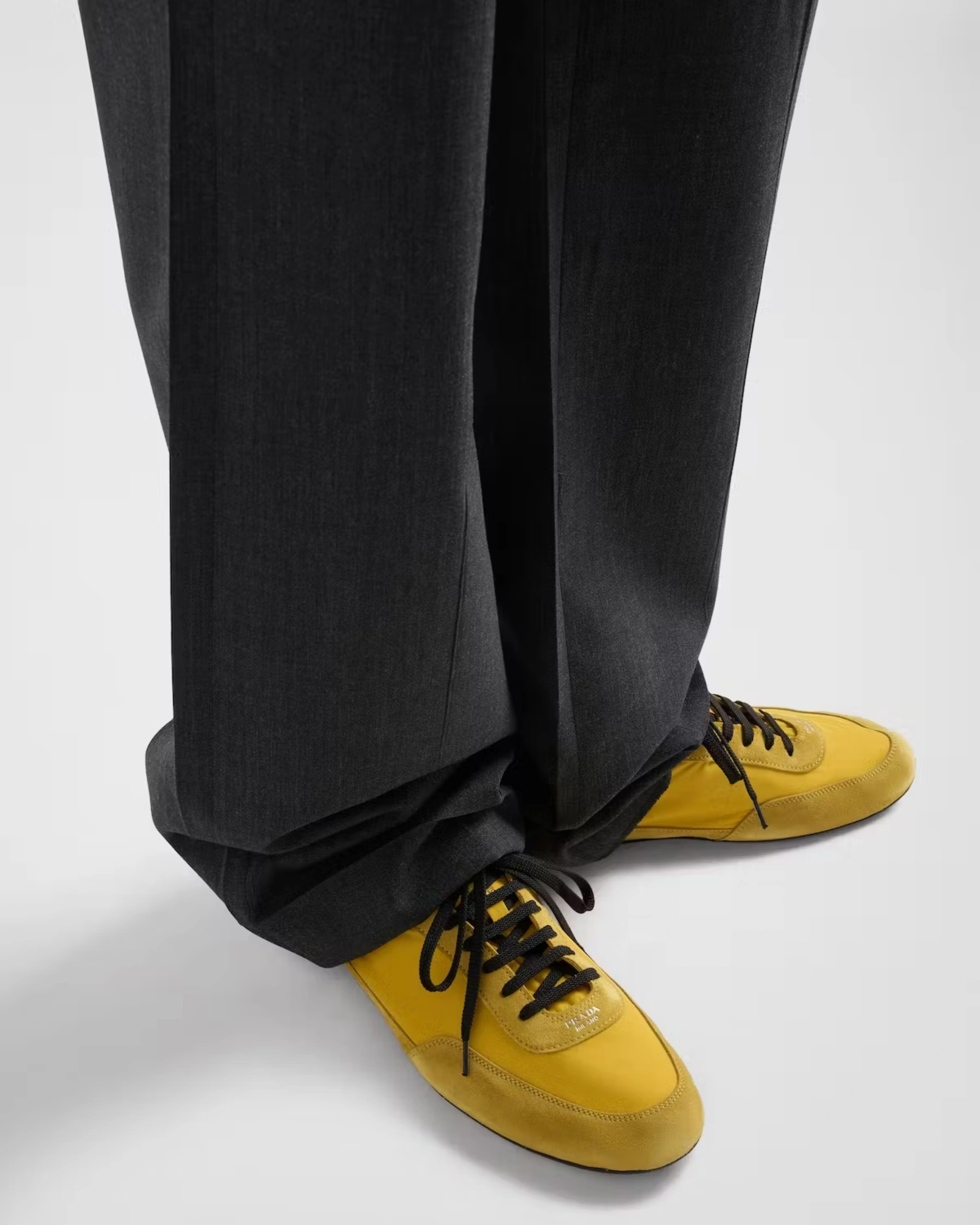
The torpedo takes flight
The newest wave of designer footwear is leaner and more restrained. Dubbed “torpedo sneakers” for their aerodynamic profiles, these shoes borrow heavily from the design language of 1970s track and field footwear: suede panels, nylon uppers, slim soles, and muted but playful colors.
For much of the last decade, luxury sneakers were oversized, attention-seeking, and often deliberately absurd. Balenciaga’s Triple S, with its swollen silhouette, became the unofficial mascot of the “dad shoe” era, while rival brands layered panels, colors, and logos onto sneakers that seemed engineered less for walking than for making a statement. Now, that aesthetic is giving way to something very different.
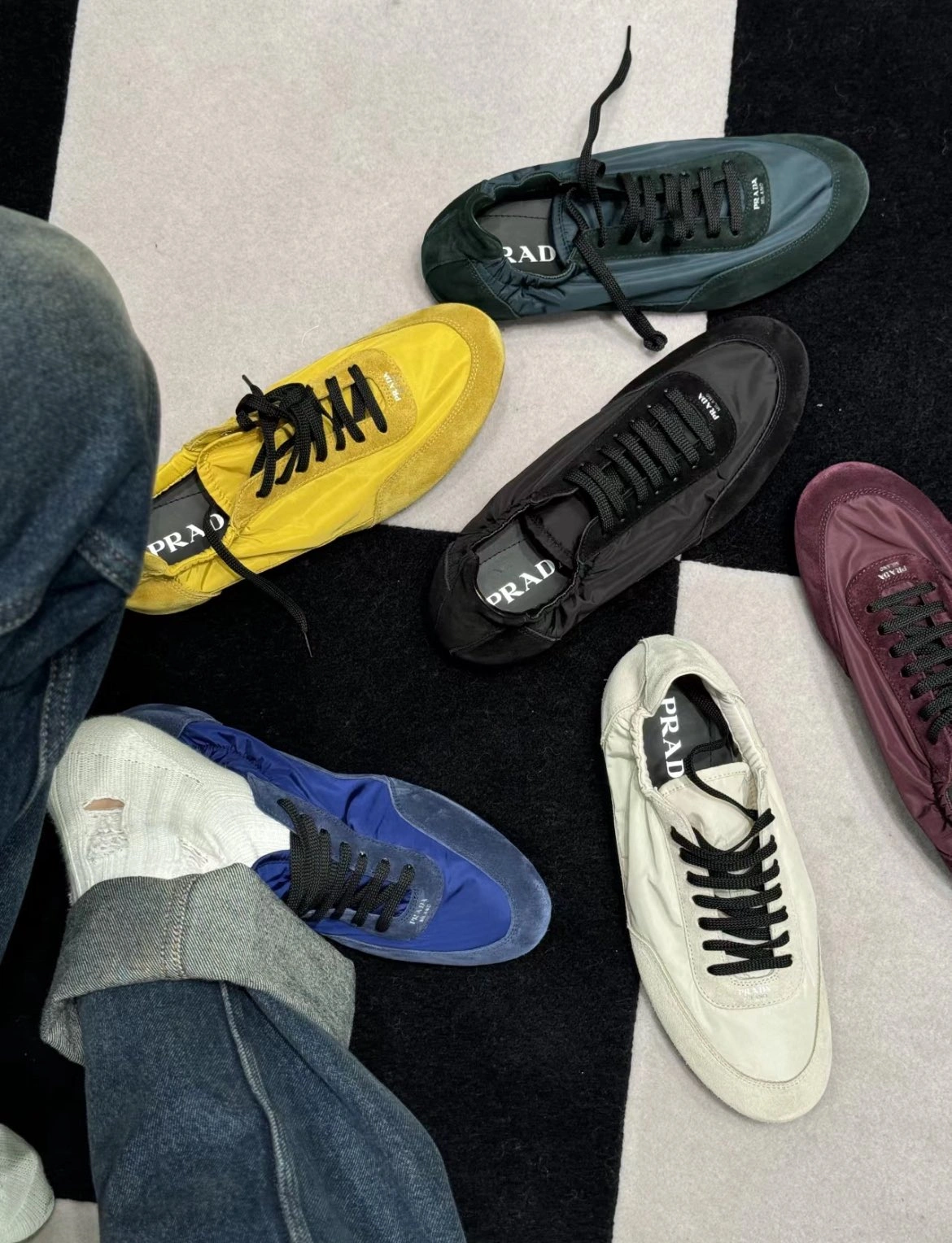
Prada’s Collapse sneaker looks more like a pliant ballet slipper than a performance trainer. Maison Margiela’s Sprinter, with its minimal cleat sole, has already drawn comparisons to Nike’s pioneering Moon Shoe. Dries Van Noten has introduced suede trainers in vivid retro shades such as kiwi green and mustard yellow, recalling the palette of mid-century athletic uniforms.
RELATED: 7 Sneakers That Are Changing the Game (And Your Wardrobe)
Going slim
The mood is unmistakable. Where once sneakers were swollen and ironic, the torpedo is understated and earnest. There was a shift around 2023, where people started wanting sleeker silhouettes and slimmer soles. People had fatigue with bulkier models. They wanted sneakers that could move between sport and fashion more seamlessly.

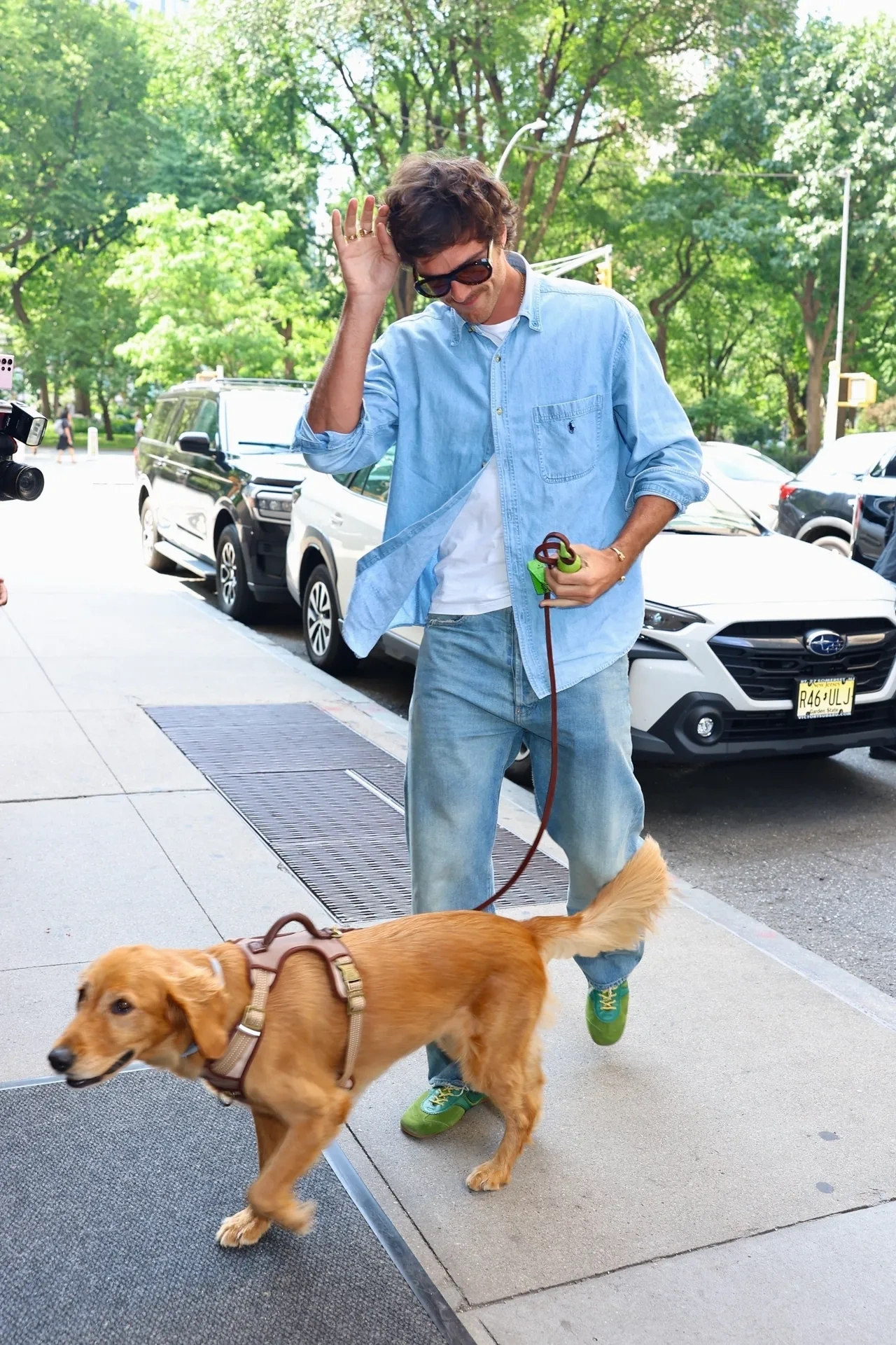
High-profile figures have helped define the shift. This summer, Jacob Elordi was photographed in Rome while filming The Dog Stars, wearing Margiela Sprinters in beige and blue, the slim profile grounding his otherwise oversized tailoring. Back in New York, he switched to a kiwi-colored pair from Dries Van Noten.
Harry Styles, who often sets the pace for menswear trends, has cycled through Prada’s Collapse sneakers, Margiela Sprinters, and Dries trainers in recent months, each worn with an ease that emphasizes the shoe’s versatility rather than its exclusivity.
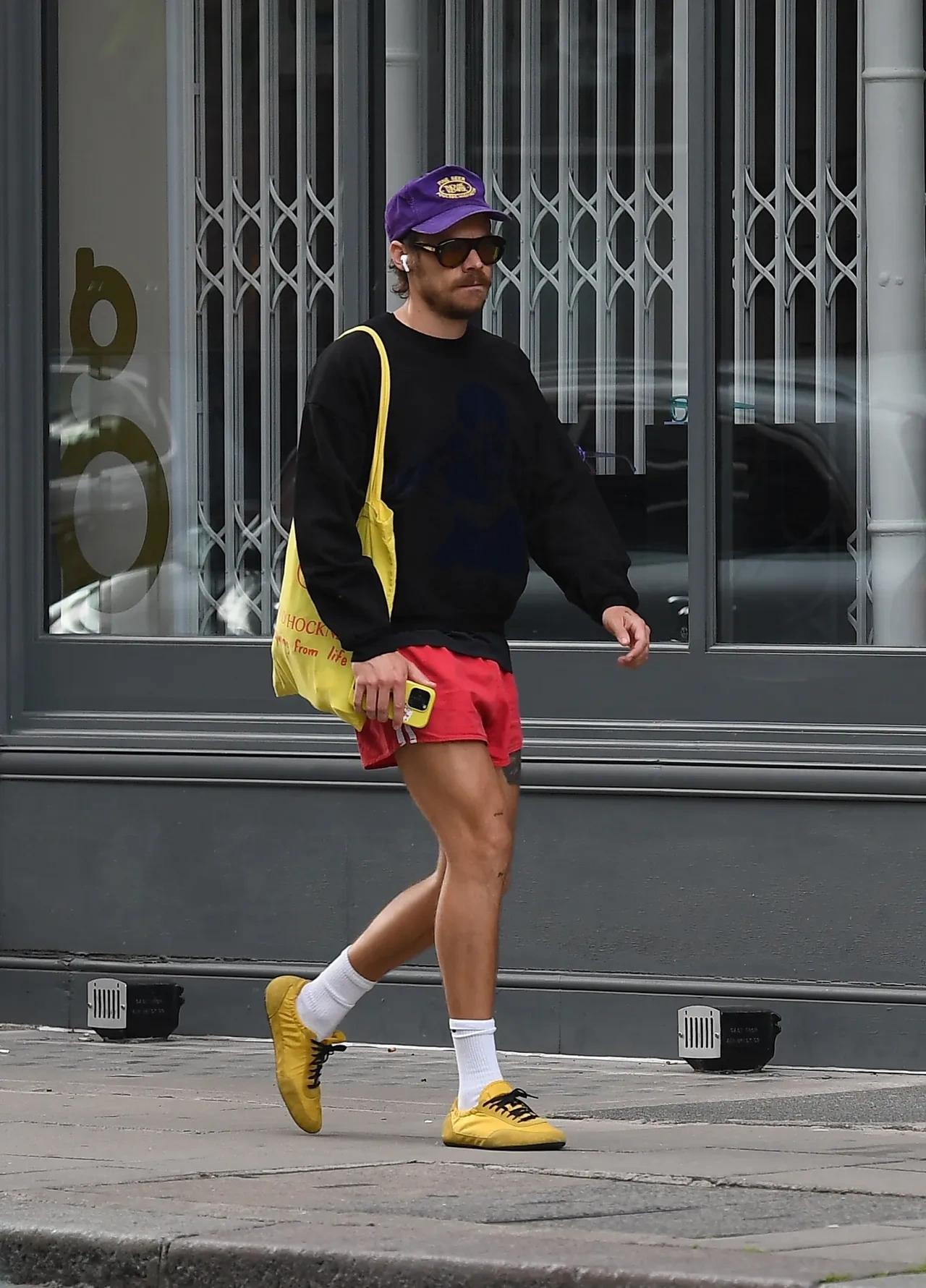
Luxury in restraint
The paradox is that this new restraint comes with familiar luxury pricing. Prada’s Collapse retails for $975, while Margiela’s Sprinter hovers just under $920. Even Dries Van Noten’s relatively simple suede sneakers cost $495. For consumers, the price is not about materials, since these shoes use less leather and foam than their oversized predecessors, but about signaling. To wear a torpedo sneaker is to suggest discernment and a willingness to pay for it.
At the same time, the silhouette has spread to more accessible markets. Puma’s Speedcat, a motorsport-inspired shoe once popular in the early 2000s, has reappeared on city sidewalks. Onitsuka Tiger’s Mexico 66, particularly in the yellow colorway made famous by Kill Bill, has become a cult favorite.
Gola, the British heritage brand, has even released its own Torpedo model at a fraction of Prada’s price. Major collaborations have reinforced the shape’s popularity. Tyler, the Creator’s partnership with Converse includes a slim runner with torpedo proportions, while Bad Bunny’s recent Adidas design introduced a “ballerina” sneaker that riffs on the same profile.

A style in flux
The broader cultural context matters. For years, sneakers were expected to be ironic objects, ugly, oversized, and self-aware. The torpedo sneaker signals a move away from spectacle and toward something subtler.
Its appeal lies in its ability to function across settings: athletic enough to appear plausible on a running track, refined enough to pair with tailored clothing, and nostalgic enough without feeling costume-like. For luxury houses, the silhouette represents a rare point of alignment between design innovation and consumer wearability.
Whether the trend will last remains uncertain. Sneakers are still subject to the same rapid cycles that have defined the fashion industry for decades. What feels fresh in 2025 may feel oversaturated by 2026. But for now, the torpedo sneaker offers a corrective to the maximalism that came before it. Light, fast, and simple, it has returned the designer sneaker to relevance as a serious marker of style.
Photos courtesy Prada, Maison Margiela, Dries van Noten, Converse, Instagram

